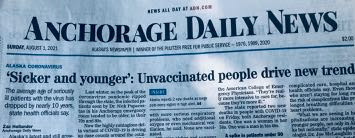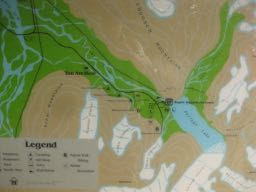wearing head coverings. It appears, though, that rekindling an old love with a woman who now lives in Kars was the underlying real reason. [I'd note here that the author tells us that suicide is a sin in Islam.]
I call this to your attention because the book, and the passage below, seems like an examination of intense human belief and behavior that offers insight into people with strong ideological attachments to fighting masks and vaccines. In the excerpt here, a group of high school girls have been discussing the suicide of a classmate.
It reminds me that people's behavior can't be attributed to one simple cause. While people have a tendency to do that, things are more complex (like why Ka went to Kars.) There are lots of factors that play a contributing role.
"Why don't you tell the story, Hande?' said Kadife. 'There's nothing to be ashamed of.'
'No, that's not true. There's a great deal to be ashamed of, and that's why I want to talk about it,' Hande said. Her large eyes flashed with a strange joy. She smiled as if recalling a happy memory and said, 'It's forty days exactly since our friend Teslime's suicide. Of all the girls in our group, Teslime was the one most dedicated to the struggle for her religion and the word of God. For her, the head scarf did not just stand for God's love, it also proclaimed her faith and preserved her honor. None of us could have ever imagined she would kill herself. Despite pressure both at school and at home to take off the scarf - her father and her teachers were relentless - Teslime held her ground. She was about to be expelled from school in her third year of study, just on the verge of graduating. Then one day her father had some visitors from police headquarters; they told him that if he didn't send his daughter to school scafrless, they would close down his grocery stored run him out of Kars.
'The father threatened to throw Teslime out of the house, and when this tactic failed he entered into negotiations to marry her off to a forty-five-year-old policeman who had lost his wife. Things had gone so far that the policeman was coming to the store with flowers. So revolted was Teslime by this gray-eyed widower, she told us, she was thinking of taking off her head scarf if it would save her from this marriage, but she just couldn't bring herself to do it.
'Some of us agreed that she should uncover her head to avoid marrying the gray-eyed widower and some of us said, 'Why don't you threaten your father with suicide?' I was the one who urged this most strongly. I really didn't want Teslime to give up her head scarf. I don't know how many times I said, 'Teslime, it's far better to kill yourself than to uncover your head.' But I was just saying it for the sake of conversation. We believed what the papers said - that the suicide girls had killed themselves because they had no faith, because they were slaves to materialism, because they had been unlucky in love; all I was trying to do was give Teslime's father a fright. Teslime was a devout girl so I assumed she would never seriously consider suicide. But when we heard that she had hanged herself, I was the first to believe it. And what's more, I knew that, had I been in her shoes, I would have done the same thing.
'After Teslime's suicide, Hande decided to take off her head scarf and go back to school; she didn't want to cause her parents any more distress,' Kadfe explained. "They'd made so many sacrifices, gone without so much, to giver her the right sort of upbringing; the things most parents do for an only son, they did for her. Her parents have always assumed that Hande would be able to support them one day, because Hande is very clever.'
She was speaking in a soft voice, almost whispering, but still loud enough for Hande to hear her, and like everyone else in the room, Hande was listening, even with her tear-filled eyes still fixed to the television screen.
'At first the rest of us tried to talk her out of removing her scarf, but when we realized that her going uncovered was better than her committing suicide, we supported her decision. When a girl has accepted the head scarf as the word of God and the symbol of faith, it's very difficult for her t take it off. Hande spent days locked up insider her house trying to concentrate' (pp. 119-120)
While Islam has a much longer and widespread tradition than Trumpism, we can see the same strong ideological link between the symbols (wearing head scarves and not wearing masks). More important, it would seem, there is a basic human tendency to take strong symbolic action in defiance of the authorities, in alliance with other rebels - sometimes with good reasons, often on a false path.
Here, for both the girls in Kars and the anti-maskers today, the face/head coverings touch a deep aspect of their identity that triggers an extreme bond among fellow believers. Both are confronted with conflicts with other loyalties they have - the girls to their parents and school, anti-maskers to their own health and that of their family members and close friends. And there are other factors intertwined - Teslime's possible marriage to a much older man, and anti-maskers', as one example, the impact on their small businesses . And then there are the influences of friends as they discuss how to handle all these conflicts.
It would be helpful to those supporting masks to hear the private discussions among anti-maskers. how similar are they to this passage from Pamuk?
That's the basic post. You can stop here if you like. But a few other things have popped up while I wrote.
As I was seeking a link to Pamuk's background, I found this passage. The highlighted part of this excerpt from Pamuk's Nobel Prize biography seems to also involve relevant themes:
"Pamuk’s international breakthrough came with his third novel, Beyaz Kale (1985; The White Castle, 1992). It is structured as an historical novel set in 17th-century Istanbul, but its content is primarily a story about how our ego builds on stories and fictions of different sorts. Personality is shown to be a variable construction. The story’s main character, a Venetian sold as a slave to the young scholar Hodja, finds in Hodja his own reflection. As the two men recount their life stories to each other, there occurs an exchange of identities. It is perhaps, on a symbolic level, the European novel captured then allied with an alien culture."
I'd note, finally, that great fiction tells the inherent stories of humankind. It reveals the basic human condition and reactions to that condition across cultures and times. It gets past the cultural facades to find those human emotions and struggles that we recognize everywhere and anytime that humans live.
This way of understanding isn't anti-science, but rather it demonstrates truths that science is (not yet?) capable of confirming. But it takes time for these great works to be sifted from lesser ones. There are many competitors in any present time that may attract followers to short term cultural truths that eventually will be uncovered as the stories that uphold the current power structure.



























